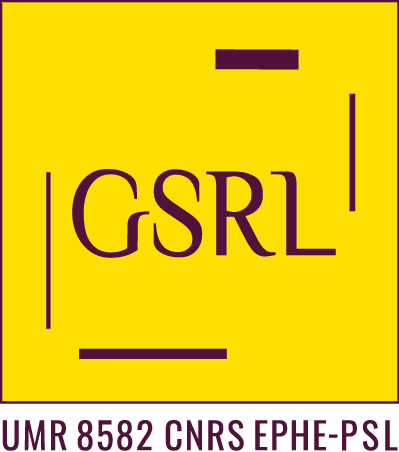
Associate Professor, Department of Religion, The George Washington University
Directrice d’étude invitée, EPHE, PSL, Mai 2022
Enchanted Revolution:
Religion and Gender Politics in Chinese Communist Propaganda
1. What Were Shamans to the Revolution? Gender and the Communist Campaign Against Shamans
Lundi 16 mai, 15:00-17:00, dans le séminaire de Vincent Goossaert, MSH Raspail, salle 9
From 1944 to 1945, the Chinese Communist Party (CCP) launched the first organized mass campaign against traditional religion in Party history. The chief targets were village shamans, the mainstay of religious life in the Yan’an centered rural Northwest China. The campaign was part of the CCP’s efforts to establish the hegemonic authority of the nascent party-state over the “backward” rural traditions. Yan’an was the wartime Communist headquarters (1935-1947), and it has been commonly recognized as the origin of the “legitimate myth of the Chinese revolution.” Yet, no research has been done on the Communist take on religion during the Yan’an times, let alone on the historical significance of the anti-shaman campaign for the revolution. This talk takes a gender perspective to explore how Party propaganda selectively represented the rural ritual traditions for its own political agenda. Male shaman-healers, as well as the traditional ritual order they embodied, were attacked as an evil masculine power that obstructed the reach of modern medicine to the masses, subjected rural young women to ritual violence, and destroyed lives. The party-state exercised its legal, political and ideological power over the shamans through mass meetings, confessions, public trials, and other mass-line methods that it had developed in the intra-party Rectification Movement of 1942-44. Its persuasive power, however, relied wittingly and unwittingly on old ritual language and structures embedded in rural “superstitions.” The Yan’an campaign’s undue focus on male shamans illustrates the critical role of the male Other in shaping the discourse of Communist revolution.
2. How to Tell a Ghost Story in Four Different Ways? Propaganda from Paper to Stage
Mercredi 18 mai, 16:00-18:00, MSH Raspail, salle 1
This talk examines how ghost stories figured in the CCP’s anti-superstition polemics. It discusses why and how the same ghost, a “Female Demon in Red Shoes,” could appear in four different political and literary genres during the anti-shaman campaign in 1944. The titular heroine stands at the center of multiple intersections: between Party-controlled rigid journalism and audience-oriented stage performances, between the historical narrative of ritual exorcism and popular entertainment, and between rural “superstition” and the revolution’s anti-superstition claims. The changing narratives about the female demon speaks volumes about the making of Maoist propaganda as a process of transformation for not only the rural masses and the old forms of art and literature, but also the propaganda workers themselves. The four different ways to tell the ghost story testify that the CCP’s construction of a new rural culture rested on a foundation of underlying fascinations with ghosts, shamans, and exorcistic battles between officials and spirits. Rather ironically, the propaganda workers, who were on the frontlines to fight against superstition, barely fell under the female demon’s enchantment spells. As they moved the story from Party newspaper’s coverage to oral and visual performances, they inadvertently put the Party’s atheist and secular claims into question.
3. How to Turn Ghosts into People? Toward the Cult of Mao
Lundi 23 mai, 17:00-19:00, MSH Raspail, salle 9
This talk presents how the Communist propaganda used ghost lore to develop a standard narrative of salvation for its own rule. This process began with the 1945 production of the famous opera, the White-haired Girl, as the Party looked beyond the anti-Japanese war for national leadership. The opera invoked the cosmic redemption of female ghosts to make female body and sexuality emblematic of class exploitations and national liberation. This gender-laden narrative cast Mao as the “Great Savior” of the Chinese people, and it created a renewed ethical and cosmological rationale for CCP leadership. The opera’s narrative set the future directions of revolutionary art and literature in the years to come. Building on this narrative, Maoist propaganda works proliferated to support the liberation of the Chinese peasants in the land reform (19461953), and to legitimize the Communist civilizing mission of the ethnic borderlands in the early
PRC. The archetypal storyline of the White-haired Girl thus evolved into a metanarrative of the Chinese revolution, and it directly contributed to the formation of the Mao Cult. The everlasting appeal of the White-haired Girl illustrates that gender language and symbolism in Chinese religion remained a central element in shaping the Communist revolution.
4. Archival and Field Research in Today’s China
Mercredi 25 mai, 14:00-16:00, dans le séminaire de Marianne Bujard, Maison de l’Asie
“Who moved my cheese?” ask the heroes of Spencer Johnson’s famous 1998 book in their quest to adapt to new circumstances. The allegory of “cheese” is used here for archival materials and field sites that the Chinese government has increasingly monopolized to nourish the Party-state at the expense of scholarly research. Particularly difficult to access are ethnic areas, ethnic religious sites, and archival materials concerning Party history. From 2003 to 2019, I hunted “cheese” in Songpan on the Sino-Tibetan borderland and in Yan’an, the acclaimed fountainhead of the Communist Revolution. In the talk I intend to share my hunting experiences, both successes and failures. Other than to condemn and to commiserate over the situation, the purpose of sharing is twofold. First, to hone skills and strategies: gender matters, race matters, backdoors and side doors matter, and only if you are lucky, money matters. Second, to explore different possibilities of finding and using sources when it has simply become impossible to access certain archives and sites under the current political environment. We may not find the targeted “cheese,” but we can still find nourishments in the research process.




